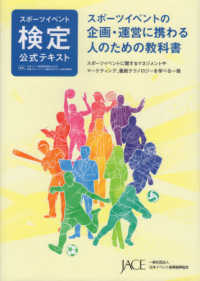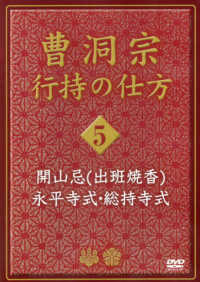- ホーム
- > 洋書
- > 英文書
- > Cinema / Film
Full Description
From Victimhood to Empowerment: Representing Women in 1920s Soviet Georgian Cinema brings the cinematographic works of Georgia's State Film Industry from the margins of the Soviet film studies to the centre. The book focuses on women's representations and explores how the gender roles were modified throughout the decade according to the new social and political ideals employing the discourse analysis, postcolonial perspectives and psychoanalytical feminist film theories.
Bringing together Soviet Georgia's most important films of the period, the book inspects the female body's symbolic function in the aspects of class dichotomy and ethnic hierarchies. It analyzes the construction of the 'Oriental other' by the Russian colonial imagination and its subsequent dismantling in the context of the Caucasus's de-Orientalization. It also examines the characteristics embodied by the 'heroine' and 'villain' of the new social order—the New Soviet Woman and the NEPwoman—and explores women's transformation within the revolutionary setting during the decade.
In the light of Bolsheviks' preoccupation and endeavour to improve 'woman question', the book surveys to what extent women's screen images were emancipated and whatthe functional meaning of this emancipation was in the given context; how the new ideals of the New Soviet woman were inscribed in the period's films and how these ideals were combined with Georgian nationality.
Contents
Acknowledgements
Notes on Translation and Transliteration
List of Acronyms and Abbreviations
Introduction
1. Class and Symbolic Meaning of Female Bodies
2. At the Intersection of Class and Ethnicity
3. Representing 'East': Oriental Fantasy
4. Transformation of the 'East'
5. Meet the New Soviet Woman: Incompatibility of Femininity and Agency
6. Monstrous Femininity of the NEPwomen
7. Reimagining Revolution as an Oedipal Drama: Transformation of the Mother Figure in the 1920s Revolutionary Films
Conclusion
Selected Filmography
Bibliography
Index








